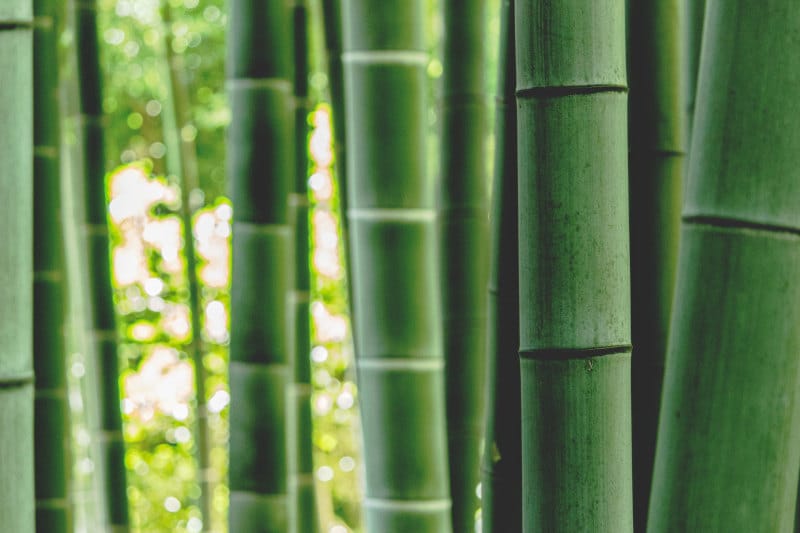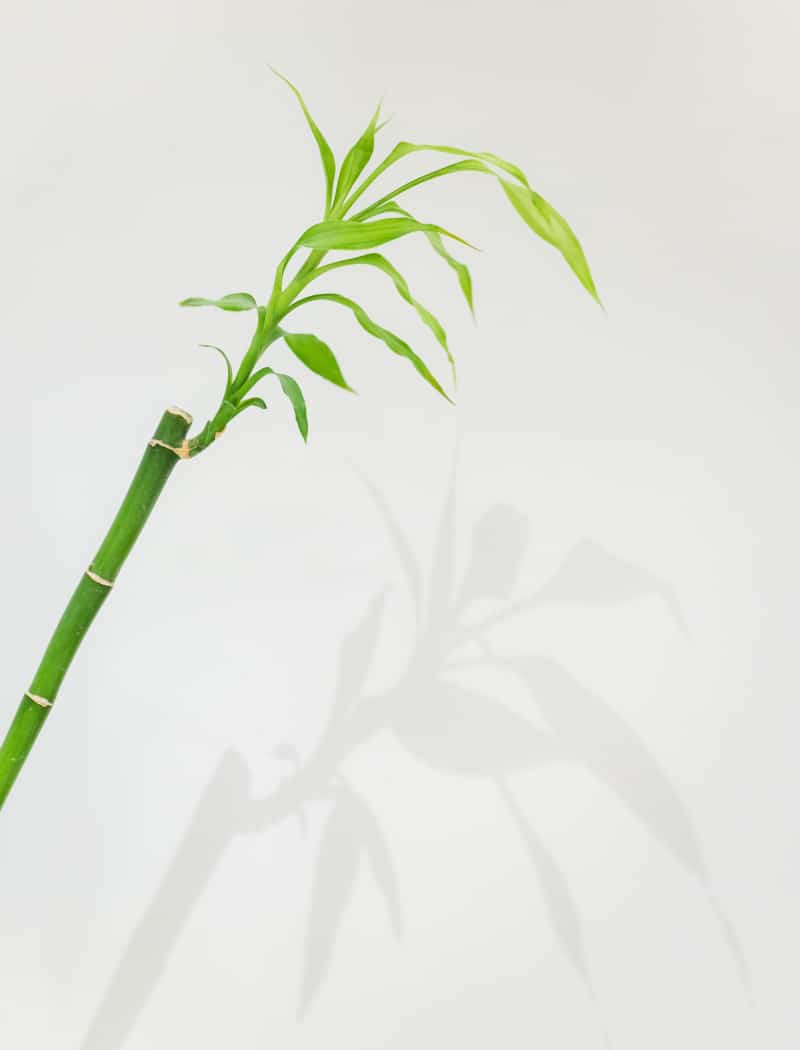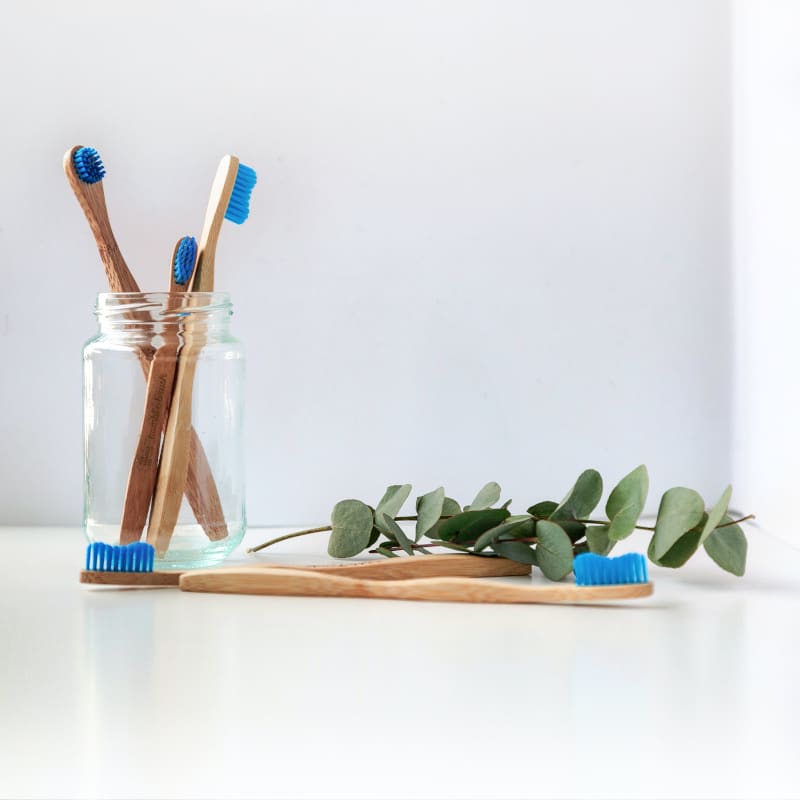How Sustainable is Bamboo? The Facts and Myths
Sustainable bamboo has been dubbed one of the primary eco-friendly materials. If you have ventured into a zero-waste store, chances are you have seen bamboo toothbrushes, toilet paper, and everything in between made of bamboo.
Automatically, like organic cotton, many think that must mean the material is entirely ethical and green. Bamboo is a versatile crop with huge potential. It seems to be paving the way in terms of sustainable materials.
Continue reading as we dive further into sustainable bamboo and determine how environmentally friendly it really is.
What Is Bamboo?
Bamboo is a tree-like grass that is naturally renewable and fast-growing. As a crop, it requires very little maintenance to grow. This is because bamboo does not require any herbicides or pesticides. Additionally, bamboo is not a very water-intensive crop.
Sustainable bamboo is highly adaptable, especially in regions with high humidity. There are not just one species of bamboo; there are more than 1,200 different bamboo species. It grows in Africa, Southeast Asia, Latin America, and southern parts of the USA.
Some bamboo species can also grow in chillier areas, such as in Northern America and the UK. It is also important to note that bamboo cannot just be used as a material but is also a healthy food source in many areas worldwide.

Bamboo shoots, in particular, are low in calories and fat and act as a great source of potassium and fibre. The crop can be used to create lots of different products, too, such as toothbrushes, kitchen utensils, plates, and more. Moreover, bamboo can be used to make clothing.
In South-East Asia, the crop is also used extensively in the construction industry. For example, as scaffolding to build houses and huts. The reason for this is that it is an incredibly robust material.
Another impressive thing about bamboo is it absorbs 35 percent more carbon dioxide than trees. Bamboo plants can also grow one inch per 40 minutes. All of this paints bamboo as a very eco-friendly plant, but how sustainable is bamboo?
Where Is Bamboo Used For?
As mentioned above, sustainable bamboo has many different uses. Essentially, the crop can be used to make almost anything. Bamboo can be used to build houses, schools, and other buildings. UNESCO says that 70 hectares of bamboo create enough material to build 1000 homes.
Additionally, India has been using bamboo to reinforce roads. China has been using the crop to build bridges so they can support trucks that weigh more than 16 tonnes. On that note, China they are also using the crop in various medicines to treat illnesses like kidney disease and cancer. Bamboo is also capable of creating great clothing products. The fabric is durable and strong.
Moreover, it is thermal regulating, breathable, and wicks moisture much better than polyester. It will also resist odor and is fast drying to keep you comfortable and dry. Bamboo can be used to create bracelets, earrings, necklaces, and other kinds of jewelry, too.
As mentioned above, sustainable bamboo is also a great food source and is used in lots of Asian food preparations. It is believed to have antibacterial properties and lots of other benefits for human health.
Bamboo is also being utilised to craft beautiful furniture pieces, rugs, and textiles. The crop can make paper products, reusable nappies, tableware, and utensils. Bamboo has huge potential because it can make almost anything.
Is Bamboo Really Sustainable?
Bamboo is well recognised as a sustainable material and is used to create a lot of eco-friendly products. However, there are some issues with bamboo that can make it unsustainable.
We’ll dive further into the ethical concerns about sustainable bamboo later in this article. Unfortunately, it is not a yes or no answer. Bamboo has many great qualities which make it eco-friendly, but it also has some unsustainable factors.
In relation to good sustainable qualities, bamboo is a renewable resource. It grows in a similar fashion to weeds and can achieve full maturity in just three years. This is incredible when you consider oak can take more than 20 years to mature.

In addition, bamboo does not need replanting after harvesting because it regenerates from its root system. Therefore, no new land needs to be cleared, which reduces soil erosion and deforestation.
Moreover, bamboo releases more oxygen than the majority of tree species and can absorb a lot of carbon dioxide from the atmosphere.
It is also incredibly durable and long-lasting, which is important when talking about sustainability. Natural bamboo is also compostable and recyclable, which is another important factor when considering whether a product or material is eco-friendly.
Sustainable bamboo can also grow in a range of soil types and climates, which makes it incredibly versatile. As a result, it can thrive in areas where other crops struggle to grow and can preserve valuable ecosystems.
Using bamboo to create products also means less waste. This is because all parts of the plant can be used. For instance, even the dust created throughout processing can be used as fertilizer.
Roots can be used as animal feed, or mulch and stalks can be used for construction. It is apparent bamboo has many great environmental qualities.
Are Bamboo Fabrics Sustainable?
When many people hear bamboo leggings, they probably think that they have fewer chemicals and are more eco-friendly than cotton or modal fabric. This may be true during the cultivation stage, but unfortunately, it is not the case during the manufacturing process.
There are lots of different methods to transform bamboo into a material. For example, spinning the fibers to create ‘bamboo linen’. Unfortunately, this process of creating bamboo linen is rather expensive and labor-intensive.
The next most popular method is used to create bamboo rayon which is soft and silky. This type of bamboo fabric is created through a very chemical-intensive process. It is created through the viscose process, which involves dissolving cellulose material in a chemical solution to create a pulpy viscous substance. Then, it is spun into fibers and can be created into fabrics and threads. The chemicals used throughout this process are highly toxic and pose threats to human health.
Around 50 percent of hazardous waste from the production of rayon, including the bamboo type, cannot be reused and recaptured. Thankfully, they are not just dumped back into the environment because wet processors in the past number of years have established waste and chemical management treatments and revamp practices.
The main issues with bamboo fabric when it comes to sustainability are the labor-intensive processes, expense, and use of dangerous chemicals.
Are Bamboo Products Sustainable?
Before we answer whether bamboo products are sustainable, let’s look at how we make sustainable bamboo products.
Generally, bamboo plants take around four to five years to grow. From here, they get dense enough so that they can be harvested.
Once they reach the ideal size, the farmers chop the bamboo shoots individually. From this point, they send them to manufacturers. Here, the plants are chopped into strips for processing, and machines are utilized to remove the outer layer of the crop.
Following that, the strips are bundled together and placed in a high-pressured steamer. This changes the color of the plant because it cooks the sugar contents. This results in caramelized bamboo strips, and the high moisture levels cause them to become more durable and expand in size.
The bamboo strips then dry out and are sorted based on their color. Manufacturers then inspect the bamboo to ensure it will not break easily. After that, they glue the strips together to create bamboo panels using a hydraulic press.
Specialized machines are then deployed to chop the panels into various shapes depending on what the final product is meant to be. Following quality checks, the panels are then created into the finished items.
If bamboo is grown under the correct conditions, it can be very sustainable. In relation to clothing, most bamboo fabrics sold are a form of rayon. This process involves harmful chemicals and is intensive. These chemicals have been better managed in the past number of years, but there is a danger still present.

Sustainable bamboo is a better option than traditional cotton and polyester, that’s for sure. The most sustainable form of bamboo is lyocell bamboo, but it is quite difficult to find.
It is important to remember that the vast majority of products labeled as bamboo are truly rayon. This means the products are made using an intensive chemical process and probably do not have the qualities bamboo is known for.
Still, the fabric and products made from bamboo have huge potential and are much cheaper to create than cotton. Additionally, no pesticides are required to produce bamboo, and it is not as chemically intensive as materials like polyester.
It is important, though, to purchase bamboo products from transparent and responsible brands to ensure you are receiving a sustainable variety. Bamboo products, beyond clothing, are generally eco-friendly.
It seems that most of the ethical issues occur when turning the crop into fabric. The main thing that impacts the environmental status of a bamboo product is whether chemicals are used during the production process, resource use, and travel emissions. Haulage emissions are the only thing that may be high, and this is a direct effect as a result of the demand for bamboo.
Some Ethical Concerns About Bamboo
It is clear bamboo has lots of excellent sustainable credentials and is a better choice than many conventional materials. However, to be truly environmentally friendly, we need to be considerate of how we grow and use bamboo. The demand for bamboo products is only set to continue.
With this demand comes the risk of overfarming. This results in less biodiversity, more monoculture, and further strain on established ecosystems. The manufacturing process with bamboo also has a number of ethical concerns.
When bamboo has been harvested, the sustainable credentials quickly diminish because of the chemical processes. In addition, there are emissions created during the processes that quickly offset any of its benefits for the planet. If bamboo is not processed, it can be a very sustainable material.
Alternatives for Bamboo
If you really want sustainable bamboo products, it is best to select bamboo lyocell products if you can. Naturally, this fabric can be a bit more challenging to find. In that instance, bamboo linen is the next best option. However, you should look for bamboo linen that has been ‘dew-retted’ rather than chemical or water-retted.
This means the fibers have been separated from the stem of the plant in a means that uses less water and energy. Additionally, always be sure to find naturally dyed bamboo linen. Hemp is another great alternative to bamboo. Hemp fabric is a sustainable material made of fibers of the Cannabis Sativa plant family. It is naturally pest-resistant and can be grown without the use of pesticides.
In addition, it is long-lasting and durable and a renewable, high-yielding crop. Hemp is also made of all-natural fibers and is completely absorbent. Another great choice that is kind to skin and the planet is organic cotton. It is also cultivated without the use of pesticides.
Traditional cotton requires a significant amount of water to grow and uses chemicals. By contrast, organic farming practices use zero harmful chemicals and much fewer resources. Both organic cotton and hemp are better options than bamboo in relation to the fabric manufacturing process. Both grow easily and at a quick rate and require very little water.
Some Final Thoughts
Plastic has a huge impact on our planet which has led to the rise in sustainable alternatives. One material that has been trumped as the more planet-friendly plastic is sustainable bamboo. From bamboo toothbrushes, trays, clothing, and scaffolding, the material is incredibly durable and strong.
It also has a lot of sustainable credentials, but how sustainable is bamboo? For the most part, bamboo is pretty sustainable, particularly in the case of product production.
Where bamboo gets questionable is in relation to the production of bamboo clothing because the processes can be resource-intensive and use a lot of harmful chemicals.